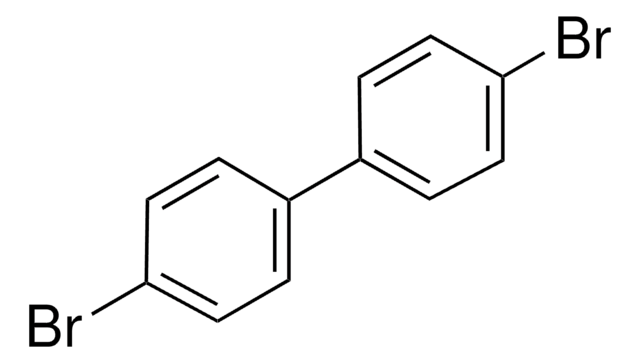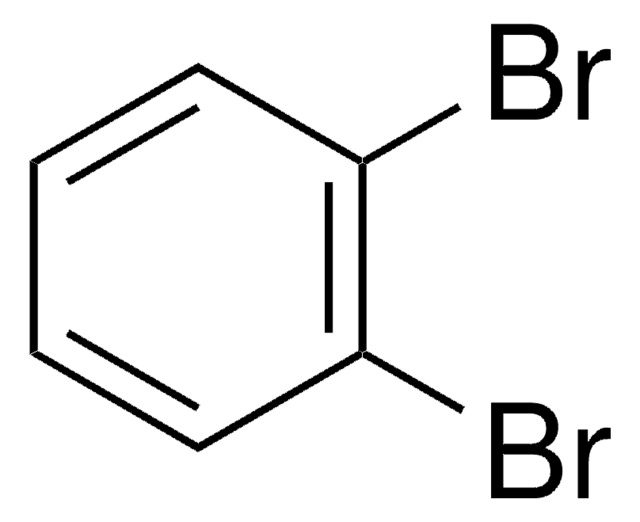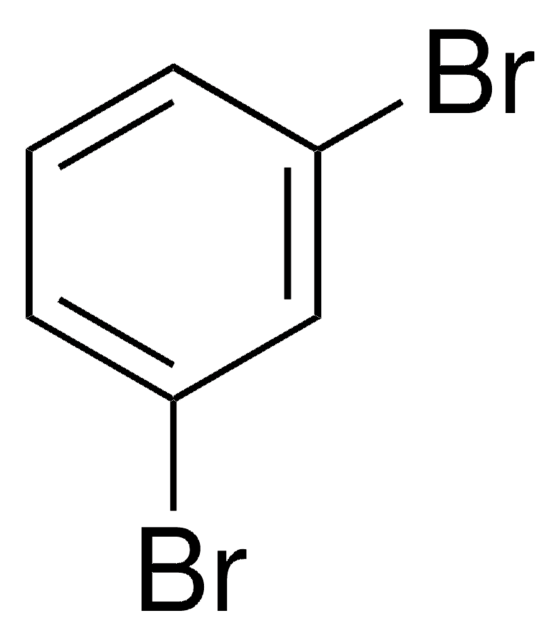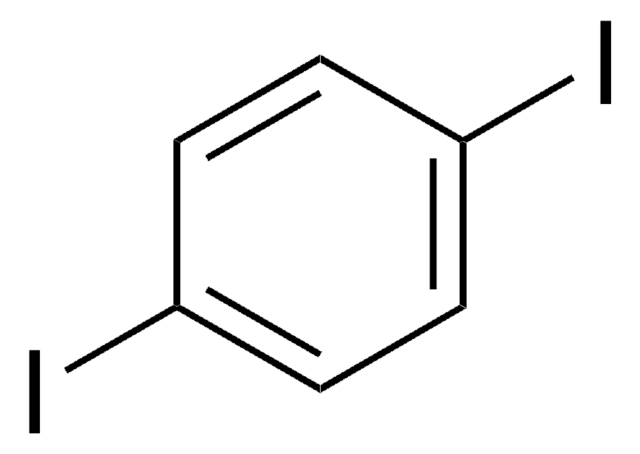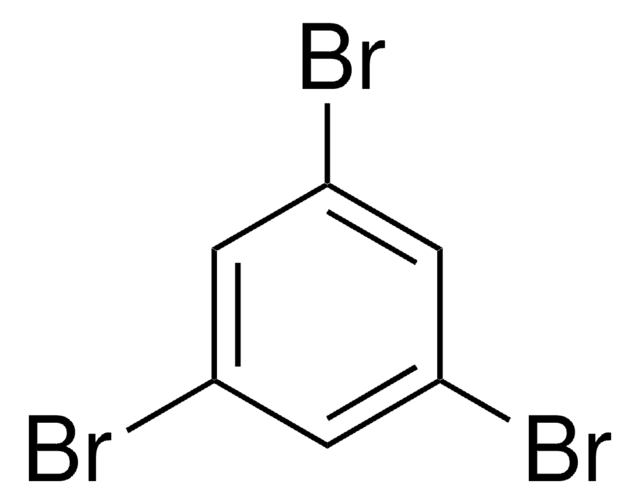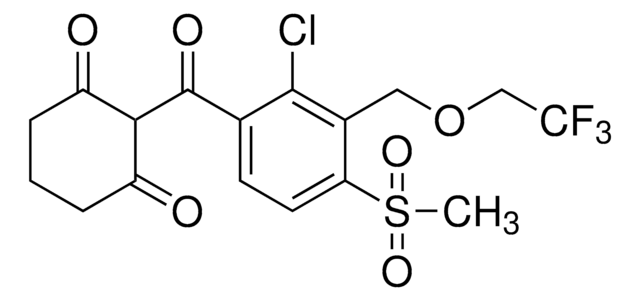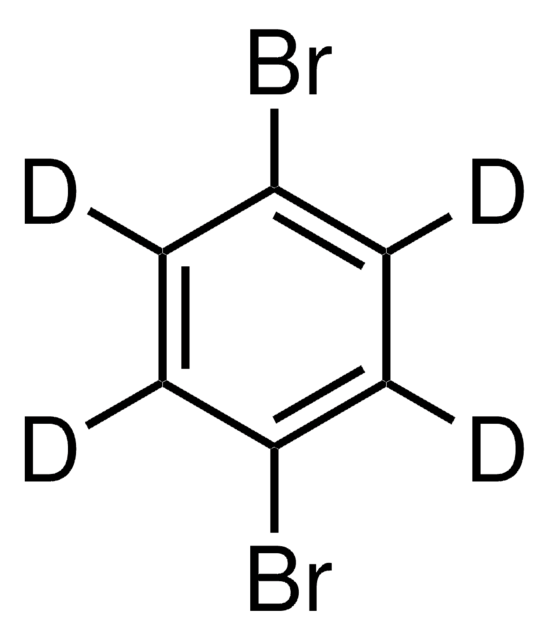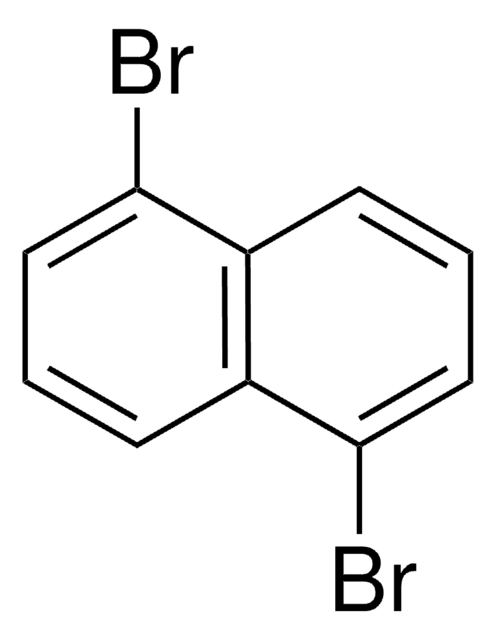D39029
1,4-Dibromobenzene
98%
Sinonimo/i:
1,4-Dibromobenzene, 1-Bromo-4-bromobenzene, p-Bromophenyl bromide, p-Dibromobenzene, p-Phenylene dibromide, para-Dibromobenzene
About This Item
Prodotti consigliati
Livello qualitativo
Saggio
98%
Forma fisica
crystals
P. eboll.
219 °C (lit.)
Punto di fusione
83-87 °C (lit.)
Densità
1.841 g/mL at 25 °C (lit.)
Stringa SMILE
Brc1ccc(Br)cc1
InChI
1S/C6H4Br2/c7-5-1-2-6(8)4-3-5/h1-4H
SWJPEBQEEAHIGZ-UHFFFAOYSA-N
Informazioni sul gene
human ... CYP2A6(1548)
mouse ... Cyp2a5(13087)
Cerchi prodotti simili? Visita Guida al confronto tra prodotti
Avvertenze
Warning
Indicazioni di pericolo
Consigli di prudenza
Classi di pericolo
Aquatic Chronic 2 - Eye Irrit. 2 - Skin Irrit. 2 - STOT SE 3
Organi bersaglio
Respiratory system
Codice della classe di stoccaggio
11 - Combustible Solids
Classe di pericolosità dell'acqua (WGK)
WGK 2
Punto d’infiammabilità (°F)
212.0 °F - closed cup
Punto d’infiammabilità (°C)
100 °C - closed cup
Dispositivi di protezione individuale
dust mask type N95 (US), Eyeshields, Gloves
Scegli una delle versioni più recenti:
Possiedi già questo prodotto?
I documenti relativi ai prodotti acquistati recentemente sono disponibili nell’Archivio dei documenti.
I clienti hanno visto anche
Il team dei nostri ricercatori vanta grande esperienza in tutte le aree della ricerca quali Life Science, scienza dei materiali, sintesi chimica, cromatografia, discipline analitiche, ecc..
Contatta l'Assistenza Tecnica.